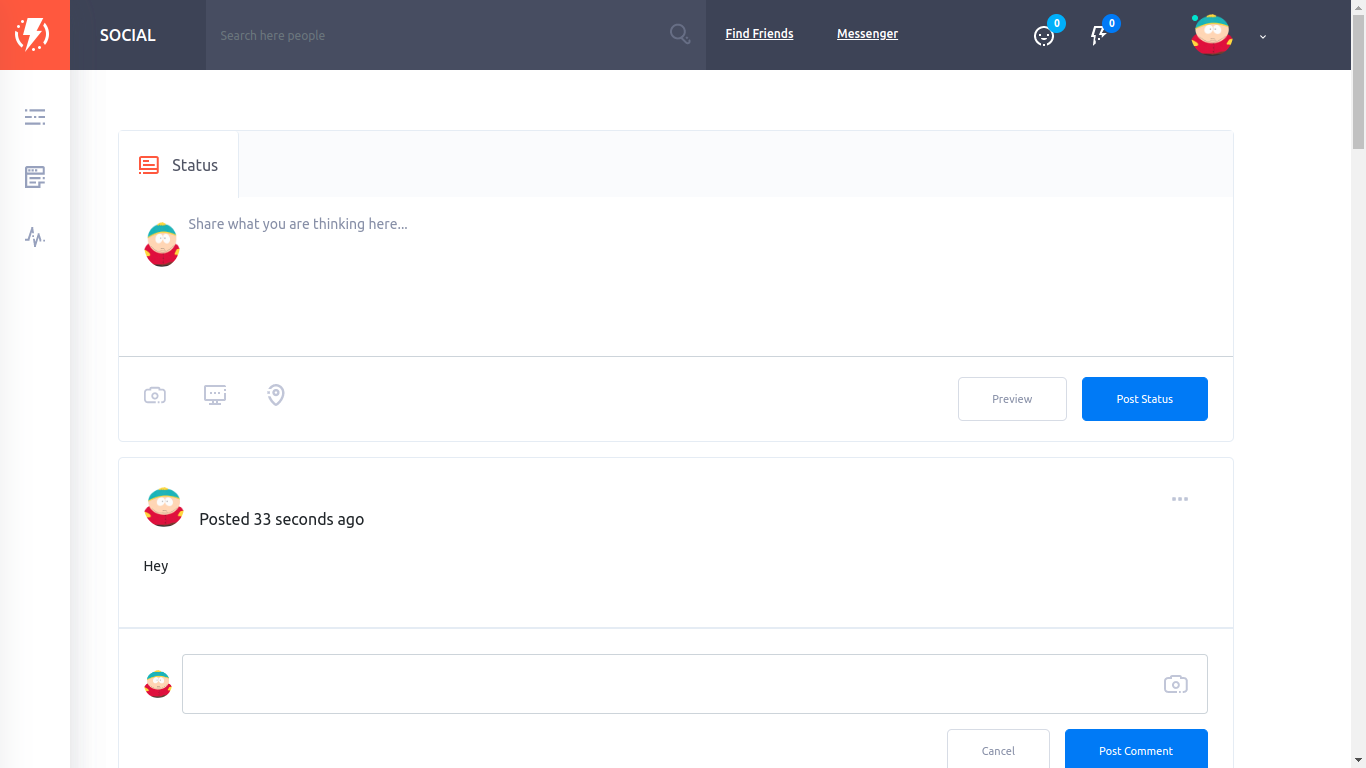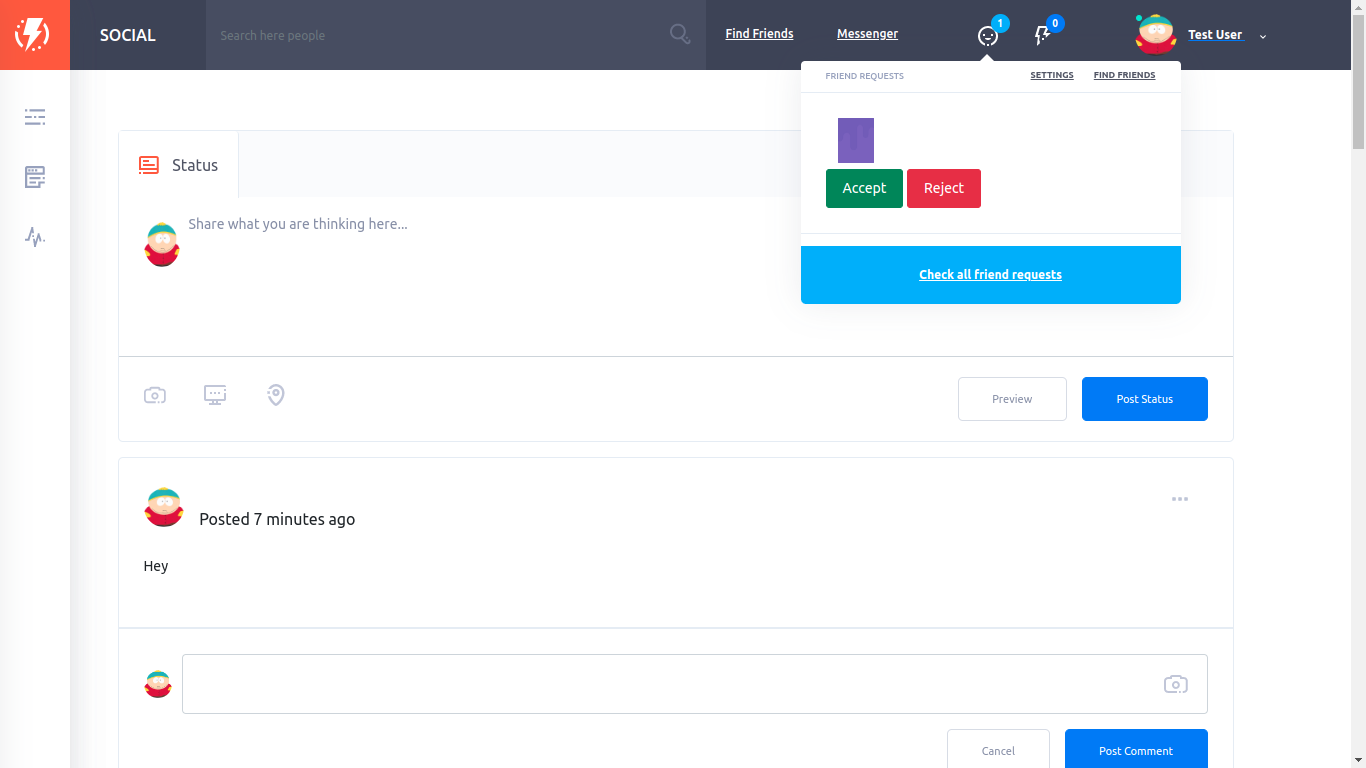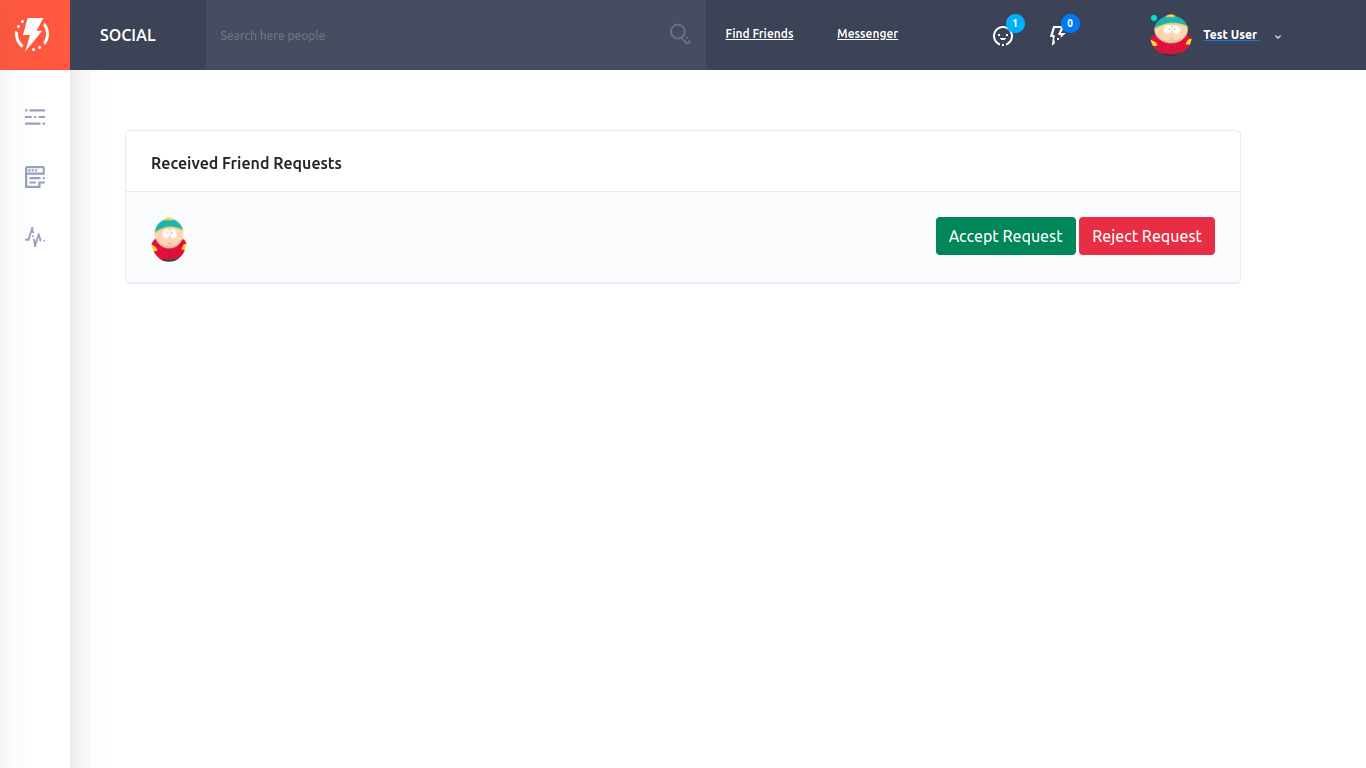A Django 4.0 -based open source social network application.
- Login/Register as a user.
- Create posts and comment on the particular post.
- Receive notification when someone comment on your post.
- Send friend request and accept request.
- Live chat with friends.
- Clone or download this repository and open it in your editor of choice:
git clone https://github.com/manjurulhoque/django-social-network.git- cd into project repository.
cd django-social-network- To get this project up and running you should start by having Python installed on your computer. It's advised you create a virtual environment to store your projects dependencies separately. You can install virtualenv with
sudo apt install python3-venv- Within the directory run the following command to create your new virtual environment:
python3 -m venv my-project-envThe command above creates a directory called my-project-env, which contains a copy of the Python binary, the Pip package manager, the standard Python library and other supporting files.
- To start using this virtual environment, you need to activate it by running the activate script:
source my-project-env/bin/activate.Once activated, the virtual environment’s bin directory will be added at the beginning of the $PATH variable. Also your shell’s prompt will change and it will show the name of the virtual environment you’re currently using. In our case that is
(my-project-env) $Now that the virtual environment is activated, we can start installing, upgrading, and removing packages using pip.
- The first step is to install the module,using the Python package manager, pip:
pip -r install requirements.txtModify django-social-network/setting.py with database settings if you want to connect database other than default sqlite db.
- Run the following commands in the root folder.
python manage.py makemigrations
python manage.py migrate- Also create a superuser by :
python manage.py createsuperuser- To get start runserver localy by:
python manage.py runserverOpen up a browser and visit: http://127.0.0.1:8000/ , then you will see the application.
Contributions are always welcome!
See contributing.md for ways to get started.
Please adhere to this project's code of conduct.
Show your support by 🌟 the project!!















